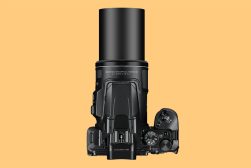New Google’s Pixel 7 Phones Feature Cool Camera Improvements
News | By Stephan Jukic | October 7, 2022
Google has officially launched its Pixel 7 phone lineup today, October 6. While much of what the new phones offer is going to be familiar to users of previous Pixel phones, there are a few new extras in there to spice things up.
Among them are improvements to the cameras on these phones that fans of decent smartphone photography might appreciate.
Google, which is fairly conservative in how it advances the design elements and specs of its phones, seems to prefer keeping much of what was previously good while incrementally adding in new improvements. For the Pixel 7 and Pixel 7 Pro, this was definitely the case. Let’s start with the cameras.
In the Pixel 7 phones, the most immediately visible change is a slight change of look for the main, rear camera. The lenses protrude slightly and are now banded by a metal plate instead of the previous plastic one found in older Pixel phones.
Beyond this, the only new image sensor added to these phones is the one in the selfie cam at the front of these phones. This was improved for the obvious sake of letting users capture better pictures of themselves and friends, but also because it helps the newly-introduced face unlock security function in these phones work better.
The rear camera’s resolution is the same as it was in the Pixel 6 Pro phones, which is 50 megapixels. This resolution is created with a 1/1.3-inch image sensor size and as can be expected, the individual pixels are very tiny, meaning that low-light performance can suffer slightly.
Google does nonetheless say that the 7 phones perform better in low lighting than the Pixel 6 models.
The phones practice pixel binning in any case, so their binned resolution is really 12.5 megapixels. The camera also comes with an f/1.9 aperture and includes optical image stabilization technology.
Another camera technology that Google has improved is Night Sight. It was available in previous Pixel phones but now works twice as fast as it did in the Pixel 6 models according to Google.
The Tensor G2 chip in these phones also merges shots from both wide and ultra-wide for the sake of sharper face capture.
Yet another feature that’s designed to improve photo quality is Photo Unblur, which is unique to the Pixel 7 and Pixel 7 Pro models. This feature sharpens blurry photos and can even be used on older shots uploaded to these phones.
Google has also supposedly upgraded these new phones’ 12-megapixel ultra-wide and 48-megapixel telephoto lenses but their specs seem largely the same. However, in the Pixel 7 Pro, the telephoto lens does feature a new prism lens that increases optical zoom capacity from 4x to 5x for a new focal length of 120mm.
Hybrid zoom shooting has also been beefed up a bit from a previous magnification of 20x to a new one of 30x. This is partially an electronic zoom feature, so we can’t be sure of how good the shots taken with this turn out to be.
Google is calling this feature “pro-level zoom” and creates it by taking photos from both the main lens and the telephoto optic to merge them into a single optimized composition to enhance sharpness. Image stabilization technology in these phones further boosts image quality by stabilizing hand shake for distance and low light shots.
We should also mention the very cool new features for macro photography in the Pixel 7 phones. Google calls this “Macro Focus” and unfortunately, it’s available only in the Pixel 7 Pro.
However, if you’re a macro shooting fan and decide to splurge on the 7 Pro model, you can use Macro Focus to capture subjects from as little as 3 cm away. That’s fairly impressive in a smartphone camera.
![]()
The Pixel 7 phones still lack a “professional” manual shooting mode for more precise image calibration but they do offer RAW photo capture and the usual dynamic range/color adjustment modes.
For video, both Pixel 7 phones feature Cinematic Blur mode and shoot video in 10-bit HDR. Google has also improved autofocus for better subject tracking in videos.
Moving beyond camera specs, the new phones come with 25% better peak brightness on their screens according to Google. The Pixel 7 Pro has a 6.7-inch LPTO AMOLED display with a 3120×1440 resolution while the Pixel 7 has a 6.3-inch AMOLED screen with a 2400×1080 resolution.
These specs are fine, but nothing extraordinary. Most users wouldn’t notice much of a difference anyhow if the resolution were higher on phone screens.
Both of the phones come with two different storage options of 128GB and 256GB but the 7 Pro enjoys the further boost of 12GB RAM as opposed to the Pixel 7’s 7GB of RAM. Their battery power is quite good at 5000mAh for the 7 Pro and 4,355 for the Pixel 7. This compares well to other premium phones like Apple’s iPhone 14 models.
Google is releasing the Pixel 7 Pro and Pixel 7 phones on October 13 with starting prices of $599 for the Pixel 7 and $899 for the Pixel 7 Pro. Higher-storage versions will cost a bit more.

Check out these 8 essential tools to help you succeed as a professional photographer.
Includes limited-time discounts.












